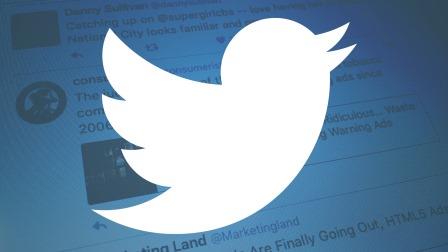New Twitter features can boost brand engagement
On the heels of Twitter’s announcement that it’s easing up on its character limit, columnist Maggie Malek has some advice for brands on how to plan for the social network’s new features.

On the surface, Twitter is the simplest of social networks. You type out a quick 140 characters, maybe link to something or include an image… and then you blast it out to your followers, leading to engagement and conversations online.
But when it comes to actually using Twitter well, both personally and as a brand-building tool, it ends up being one of the most complex channels to explain and to manage well.
Why? Because Twitter’s inherent limitations, which was one of the platform’s novelties, have forced users to game the system to fit their needs (and reach all their followers).
The best example is the @ reply feature. Twitter automatically hides those from timelines to reduce clutter in news feeds. But super-users have created a workaround (the .@) to enable all followers to see the reply tweet.
Things like this have led to a bit of a secret language that new users have to notice, then learn, to use the system to their greater advantage.
But with report (after report) of new user retention declining, Twitter is trying to change that. After months of rumors, Twitter confirmed that it will be rolling out several new features that will give users more characters per tweet and eliminate some of the “secret language” learning curve.
Making Twitter way easier for new users to understand will ultimately be a win for the brands that choose to play there.
There are a few things that I’m encouraging the brands we manage to keep in mind — and that you should keep in mind for your organization — when planning for these new features.
Shorter is more shareable
One of the biggest changes the Twitter team is rolling out relates to attachments. Currently, when you add GIFs, photos, videos, polls and so on, you lose up to 25 characters.
When the changes take effect, this “penalty” will go away. Hooray for more words!
But is that necessarily a good thing? Just because you have more characters to play with, does that mean you always should?
Our client data, backed by a recent HubSpot study, shows that shorter tweets actually get more interaction. Tweets that are less than 100 characters get 17 percent higher engagement.
Conversely, more content is more discoverable
We have long been telling clients to incorporate search terms into their tweets. Given that more than 2.1 billion search queries happen every single day, it’s important for brands to treat every single tweet like a mini landing page.
What keywords should you be using to make sure people can find you? What hashtags should you be using?
You want to make sure that new users can find you in search queries related to your brand. After all, that is how you will ensure that your story can spread! (Disclaimer: This does not mean you should start hashtag-stuffing your tweets. That will lead to unfollows and annoyance if your tweets start showing up in irrelevant searches. Just like Google Quality Score — it’s all about how good your content is.)
Improved customer service
Historically, customer service on Twitter has been a little challenging given the limit on characters, and often brands immediately take the conversation off Twitter for more detailed interactions. The new changes related to @ replies and links are great news for brands with robust customer care programs in place.
For example, if someone has a simple how-to question, you can reply directly to them with information plus a link to a YouTube video. This may streamline your process, as you can offer more detailed responses without transitioning to email or another platform.
Related to actual service interruptions or customer care announcements, brands will be able to add more information without abbreviating and may eliminate the need to direct users off of Twitter to get more information.
All of this also means that your social customer care will be more visible to the public. So make sure that you, as a brand, are ready to amaze!
Visual content is (still) king
Brands should think about upping their image game on Twitter. Now that you can add beautiful, shareable media to help tell a story without eating up precious characters, creating images for the platform should take even more precedence in your social media strategy.
But it’s important to make sure your images are perfectly optimized for Twitter. If you already have a process in place to mine images for Facebook and Instagram, you can use Landscape by SproutSocial to help you resize them.
If you’re optimizing for mobile, we like to use the In-Stream wide sizing option for Twitter every time. This ensures your image shows up beautifully when people are scrolling on mobile. There’s nothing worse than a great image that gets badly auto-cropped.
Tell YOUR story, not someone else’s
The good news? Twitter is giving brands (and the social platforms they use) plenty of time to prepare for these changes, from both a strategy and a tools standpoint.
At the end of the day, changes or not, brands should keep in mind that they need to use each social media medium the way it was intended to be used and follow best practices based on what resonates with their particular audience.
Don’t read all of these articles about Twitter changes and totally turn your strategy upside down. Do what is right to tell your brand’s story.
Some opinions expressed in this article may be those of a guest author and not necessarily Marketing Land. Staff authors are listed here.
Marketing Land – Internet Marketing News, Strategies & Tips
(14)














